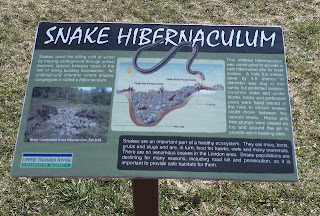bil·la·bong (bl-bông, -bng)
n. Australian
1. A dead-end channel extending from the main stream of a river. 2. A streambed filled with water only in the rainy season.
3. A stagnant pool or backwater.
From Wiradhuri (Aboriginal language of southeast Australia) bilaba, watercourse filled only after rain.
I was about six years old when I first heard of a billabong. It was in 'Dot and the Kangaroo', a story about a little girl lost in the outback, who gets adopted by a motley crew of marsupials. It obviously made a strong enough impression on me to trigger a phase of acute Australophilia.
 |
| Source: http://www.gutenberg.org/files/18891/18891-h/18891-h.htm |
 |
| OK, this is a trapdoor spider not a funnelweb. But, of course, you just need to take one look it to realise it's also going to be found in Australia! |
Anyway, after wandering around for hours in the thorny wilderness, Dot comes across a kindly kangaroo. The maternal marsupial must have been Skippy's great-grandmother, because before you could say didgeridoo, she was chewing Dot's ear off about her little lost joey.
She promptly pops the frightened foundling in her pouch and hops down to the nearest billabong. As with waterholes the world over, it's party central. The incredulous infant, high on hallucinogenic berries, is introduced to a parade of weird and wonderful creatures, each with a tragic tale to tell about their treatment at the hands of humans.
If you ignore the antiquated anthropomorphism and the casual peppering of colonial racism, it's actually a great story about the uneasy relationships between humans and other animals. But enough about Dot...
It was to be nearly thirty years before I saw my own billabong. Or, despite my best excavatory efforts, a kangaroo. Instead of Dot's bouncy chaperone, I had Google Maps to guide me. But it was still a serendipitous discovery - I certainly wasn't expecting to find a billabong sandwiched between a jungle gym and a golf green!
Wilson Reserve is hardly the unforgiving outback. In fact, it's a charming little oasis on the banks of the Yarra not too far from my scruffy suburb of (de)Preston. But it's home to a fair dinkum billabong that, at some point before Melbourne became a metropolis of four million people, would have seemed quite familiar to Dot and her four-legged friends. There were no chattering kookaburras or playful platypuses (-podes? -pi?). But the ripples from a dabbling duck were forming fractal patterns from the reflections of the silver-trunked eucalypts on the inky surface.
Here are some of the photos I took. I made them portrait, to create a sense of falling water or running paint. Earlier that day, I'd been at the Heide Museum of Modern Art, home of Australian Impressionism, so that also had a strong influence on how I responded to my bush-fringed oasis.
These four are my favourites, but you can check out the rest here.
She promptly pops the frightened foundling in her pouch and hops down to the nearest billabong. As with waterholes the world over, it's party central. The incredulous infant, high on hallucinogenic berries, is introduced to a parade of weird and wonderful creatures, each with a tragic tale to tell about their treatment at the hands of humans.
If you ignore the antiquated anthropomorphism and the casual peppering of colonial racism, it's actually a great story about the uneasy relationships between humans and other animals. But enough about Dot...
It was to be nearly thirty years before I saw my own billabong. Or, despite my best excavatory efforts, a kangaroo. Instead of Dot's bouncy chaperone, I had Google Maps to guide me. But it was still a serendipitous discovery - I certainly wasn't expecting to find a billabong sandwiched between a jungle gym and a golf green!
 |
Here are some of the photos I took. I made them portrait, to create a sense of falling water or running paint. Earlier that day, I'd been at the Heide Museum of Modern Art, home of Australian Impressionism, so that also had a strong influence on how I responded to my bush-fringed oasis.
These four are my favourites, but you can check out the rest here.

























